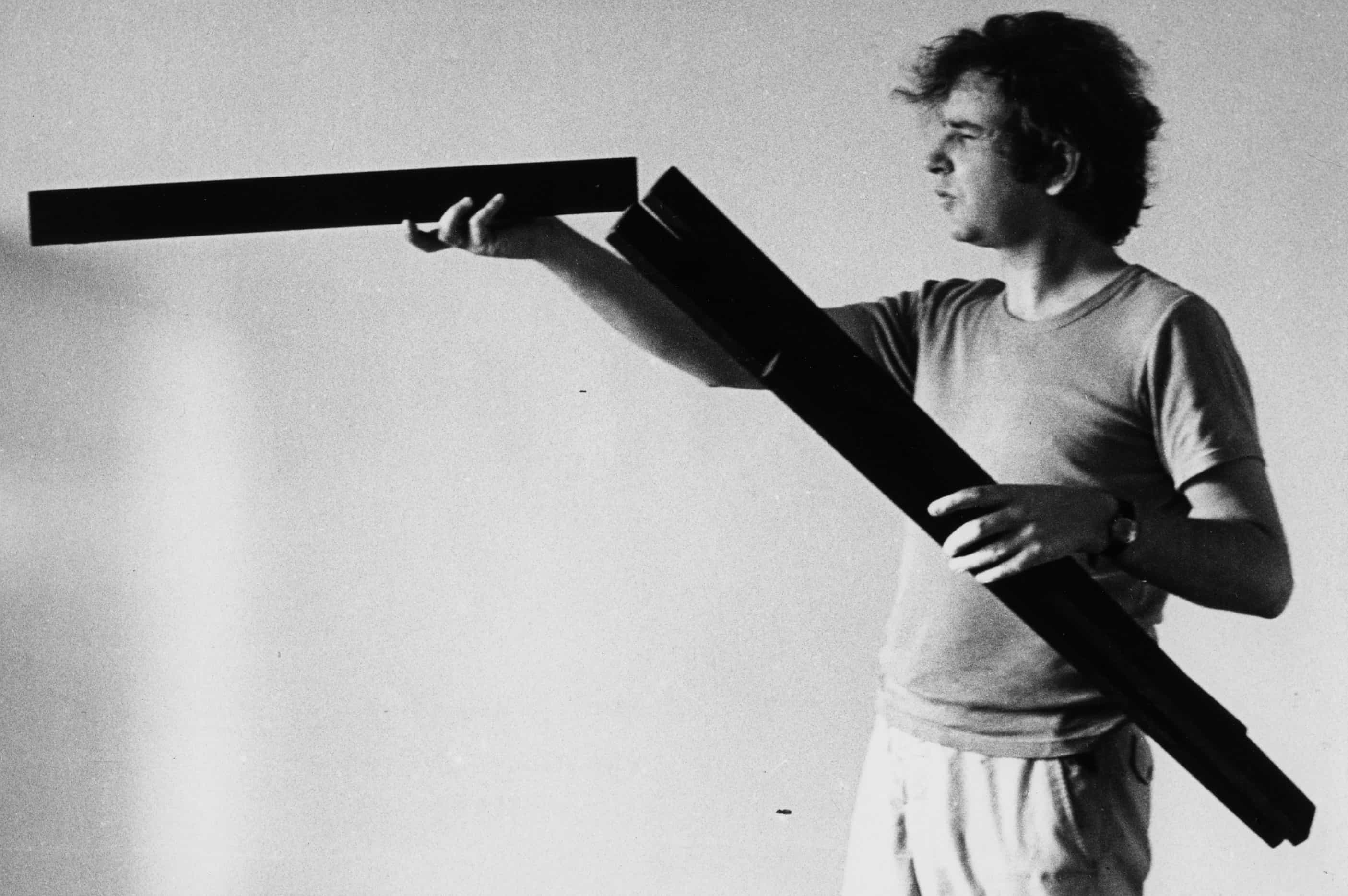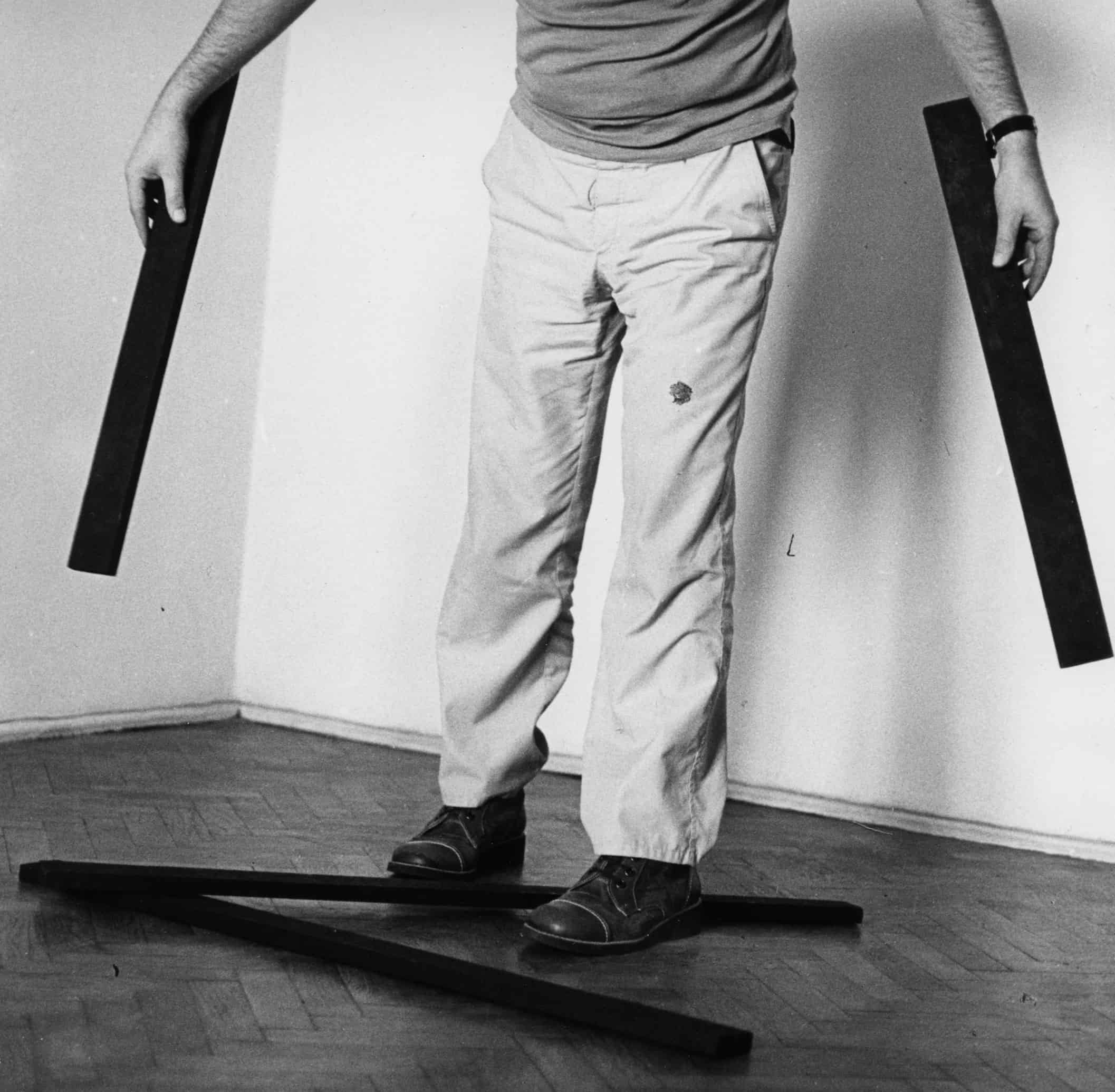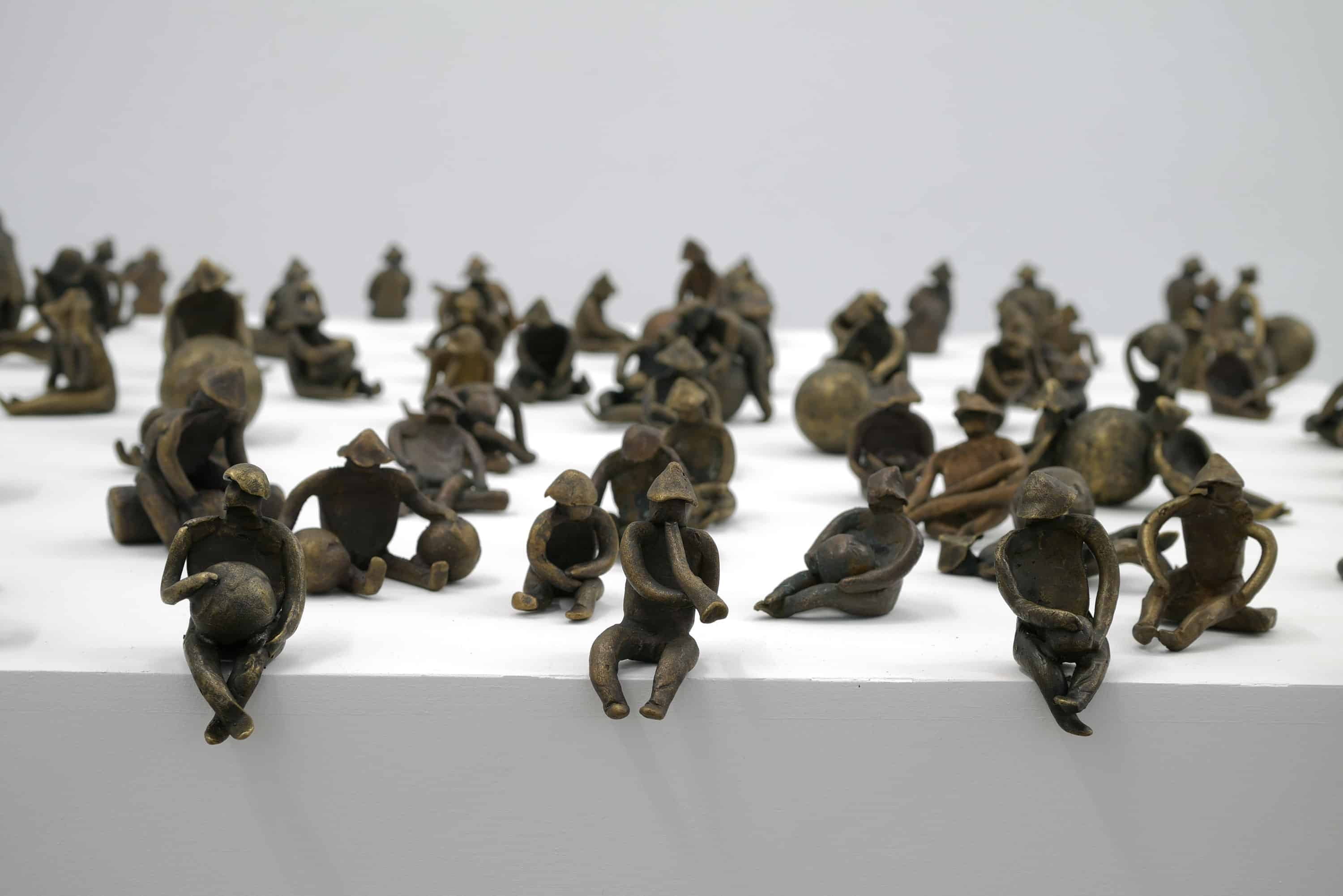Andrzej Dłużniewski was born on the 3rd of August, 1939 in Poznań, he died on the 16th of December, 2012 in Warsaw. His practice eludes clear-cut definitions since he developed his own concept of art, the essential element of which is utility, understood “in the most noble sense, as an intellectual provocation, as an impulse.”

Work from 22 series, figurative image, 1979, photography on canvas, different dimensions
The artistic practice of Andrzej Dłużniewski spanned almost all disciplines: painting, drawing, photography, collage, sculpture, object, spatial installation, performative action, as well as literary pieces and books. The artist nourished a close relation between the linguistic and visual form that manifested itself strongly throughout his career. Complementary and harmonious contiguity of the image and written word compelled some experts to label his practice as conceptual. However, one should bear in mind the fact that even though Andrzej Dłużniewski’s art did carry some typically conceptual attributes, the artist himself had always been an iconoclast. His singularity of perspective remained untarnished in the course of his entire life, until the day he died.
The series of works entitled Iconograms (1974) is the epitome of the artist’s use of motif – fifty five pieces portraying a coherent amalgamation of the word and image, including six works under the same title Picture in the face of a picture, which were displayed in the Foksal Gallery in Warsaw (1977), the ironic Painting, replica, copy and Trace after the painting.

Work from 22 series, figurative image, 1979, photography on canvas, different dimensions
Any attempt to provide a definitive and straightforward commentary on the multifaceted artistic practice of Andrzej Dłużniewski seems bound to fail. The quality that sets him apart from other artists and testifies to his undisputed individuality is the erudite character of his works – his philosophical and aesthetic deliberations accompanied by the use of the symbolic visual language and autonomous passages of text.
The series of sculptures entitled Geonauts (bronze, size varied, ca. 5 x 3 x 3 cm each, 1998 – 2004) is the perfect example of the abovementioned complexity. At the edge of a large white cube, Dłużniewski positioned miniature bronze sculptures. These tiny creatures, which apparently made a short visit to our planet, were described in detail in the book Departure a collection of short stories and essays imbued with the ironic sense of humor demonstrated by the artist. According to Dłużniewski’s own description, people never noticed the figures’ arrival even though they stayed on earth for a while.

Geonauts, 1998-2004, bronze, size varied, ca. 5 x 3 x 3 cm each
In the context of the current exhibition at the Profile Foundation, we should also looked at the series of silhouette paintings depicting the monuments (1988-1999): Goethe/Schiller (with a blue sun in the background), Zygmunt Krasiński (with a green sun), and Voltaire (with a red sun, acrylic on canvas, 170x120cm, 1999). Bare grey backgrounds portray the shadow outlines of the three monuments. Their color scheme refers to the unique symbolism applied to each of the colors by the artist himself.
Most notably, the series of silhouette paintings and sculptures mentioned above were created after Dłużniewski lost his sight in a car accident (1997). In spite of an acquired disability, he continued to create art. Paradoxically, Dłużniewski picked up a brush after he went blind. He started seeing “from the inside” and engaged in painting with the help of this family. “This is a completely different way of seeing. The visible reality disappears, but some other visions emerge – more from the head than from experience. Before, I was involved in abstract and conceptual art, and therefore ideas have always been more important to me, now I find it quite easy to project those ideas onto the canvas,” the artist said.

Work from series of drawing Ikonograms, 1973-194, ink on paper, 30 x 40 cm
His art permeated with symbolic, philosophical and aesthetic notions as well as the figure of Andrzej Dłużniewski himself are yet to be examined thoroughly. The exhibition “I Am Asked About Nothing” held at Fundacja Profile (Franciszkańska 6 Street in Warsaw) until 2 November, offers an excellent opportunity to explore Dłużniewski’s creative universe and follow his vision.
His whole life, the artist believed that art is incapable of stirring people’s minds or galvanizing them into action. “It is not the task of art to react to reality, but reality should react to art,” he stated. Let us react properly now, let us seize this outstanding chance to contemplate Andrzej Dłużniewski’s art featured on the Warsaw show.
written by Oliwia Kaczmarzewska

Andrzej Dłużniewski, Voltaire, 1999, acrylic paint on canvas, 170 x 120 cm








